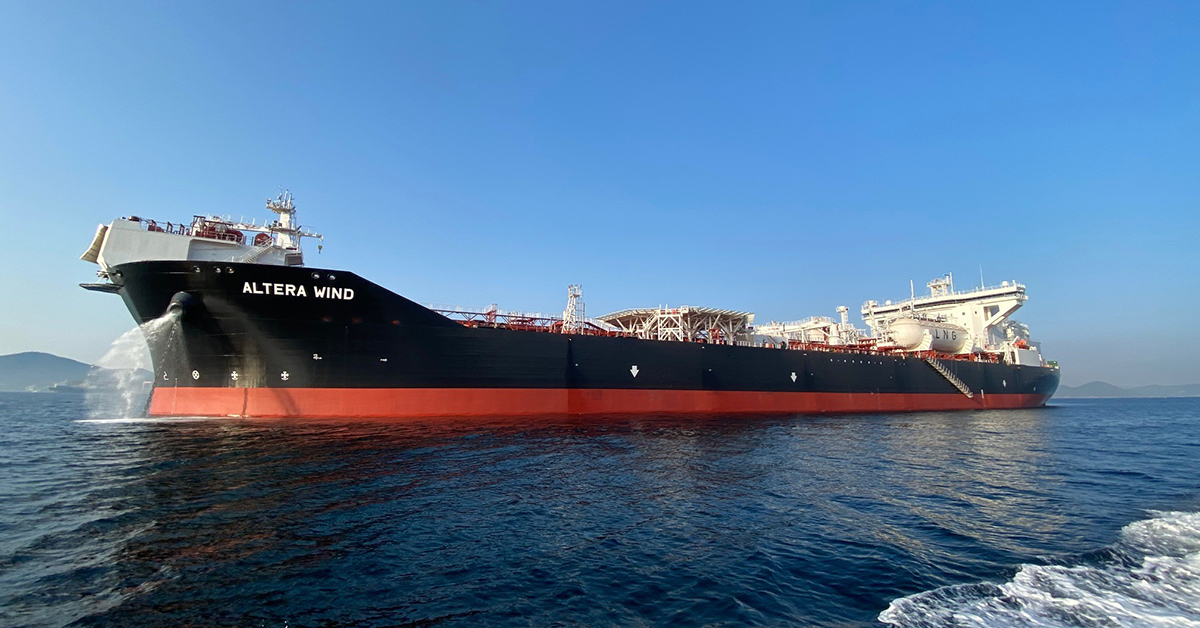Altera's Carbon Capture Pilot Project Takes on Shipping Emissions
Published by Todd Bush on August 16, 2024
Carbon Capture, Utilisation and Storage (CCUS) is one of multiple new technologies that Skuld's membership is developing to reduce greenhouse gas (GHG) emissions. Skuld member, Altera Infrastructure, is at the forefront of this development. Through the Green Shipping Programme (GSP), they are conducting a pilot project for a CCUS solution for their shuttle tankers.

>> In Other News: Opening the Door to a Carbon-Free Future: Heimdal’s Bold Move in Carbon Capture
Christian Fjell, Director of Sustainability at Altera, is leading the pilot project. He enthusiastically emphasizes:
"The key findings in the pilot project will give a greater insight into CCUS, not just for the pilot itself, but also the feasibility to include the CCUS technology in future newbuildings."
Carbon Capture and Storage (CCS) is the process of separating CO₂ molecules from other gases in industrial usage and transporting them to permanent storage facilities. The International Energy Agency (IEA) includes CCS as a vital part of the scenario for reaching net zero by the middle of the century. Despite this, the CCS development remains at a low pace. Around 50 million tonnes are stored annually today; however, this needs to increase to 7.6 gigatonnes by 2050 in the Net Zero Emission Scenario (NZE Scenario). CCS development is thus not even near the pace required for this scenario. For this reason, Skuld sees it as especially important to support pioneers like Altera.
For Altera, it is key to keep all options available for the future design of their vessels. CCUS is one of many energy combinations on the table for reducing emissions. Christian explains that they continuously monitor their "Position Paper", an in-house developed document for assessing the current status of fuel technologies' availability and maturity.
"The position paper gives us an overview of the status of the different technologies available for our trade. Keeping track of status and development is critical. If there are gaps or developments in the technologies, we can actively strengthen our knowledge by taking initiatives like we do with CCUS through the Green Shipping Programme."
Utilization of captured carbon is an appealing aspect of the Net Zero Emissions by 2050 Scenario. Captured carbon could be utilized in other industries, and as Altera operates in the North Sea, they note: "For instance, greenhouses in the Netherlands and Belgium require substantial amounts of CO₂ and could be an alternative for utilization. However, there needs to be a predictable regulatory framework to give credits equal to its usage in the EU. This is not yet in place, which makes it difficult to rely on utilization as part of the concept we build for this pilot."
Altera Infrastructure also actively investigates the entire value chain through its Stella Maris project. Stella Maris is a "large-scale, flexible, scalable maritime logistics solution for captured CO₂ from industrial sources, both large and small." The project aims to store 10 million tonnes of CO₂ annually.
A typical shuttle tanker would likely emit 15,000 – 40,000 tonnes of CO₂ annually, depending on size, trade, and activity. With a potential storage capacity of millions of tons for projects like Stella Maris, a substantial number of vessels would be required to make such a project feasible and economically sustainable for shipping alone. Therefore, land-based industries will be necessary for developing storage infrastructure. However, if shipping were to be a part of a well-functioning infrastructure, the potential for including a considerable number of vessels in the carbon capture infrastructure is possible.
Pilot projects, like the one Altera is leading, become vital sources of information and knowledge for Skuld. Being actively involved in the transition gives Skuld greater insight into changes in risk. With better risk assessment, Skuld can serve their members better today and in the future. Being involved in the GSP strengthens Skuld's knowledge of the transition to lower emissions and serves as an important arena to help build a network with industry stakeholders who are creating solutions for the development of the industry.
Subscribe to the newsletter
Daily decarbonization data and news delivered to your inbox
Follow the money flow of climate, technology, and energy investments to uncover new opportunities and jobs.
Latest issues
-
64 Carbon Projects Were Stuck. Texas Just Unlocked Them
Inside This Issue 🛢️ 64 Carbon Projects Were Stuck. Texas Just Unlocked Them ⚙️ In Ohio, Hydrogen Industry Presses on Despite Federal Uncertainty 🧲 Agami Zero Breaks Through With Magnetic Hydrogen...
-
This U.S. Plant Might Change Aviation Forever
In This Issue 🛫 A Georgia Plant Just Cracked Aviation's Fuel Puzzle 📉 CO2RE And ERM Release 2025 Update On Greenhouse Gas Removal Costs 🔗 Abatable Partners With BlueLayer To Streamline Corporate C...
-
Canada Just Made CCUS Way More Profitable
Inside This Issue 💼 Canada Unlocks EOR for Federal Tax Credits in Landmark Policy Shift 🚀 Carbontech Funding Opens as CDR Sector Pushes for Net-Zero Standard Revisions 💧 CHARBONE Confirms its Firs...
Company Announcements
-
Step strengthens Louisiana’s role in U.S. energy leadership and advances project finance process for biomass‑to‑fuel facility SACRAMENTO, Calif. & NEW ORLEANS -- DevvStream Corp. (Nasdaq: DEVS...
-
Climeworks Opens the World’s Largest Direct Air Capture Innovation Hub
Key takeaways: Climeworks launches the largest innovation center for Direct Air Capture, employing over 50 engineers in Zurich, Switzerland. The center is designed to reduce the cost and increase...
-
XCF Global Moves to Double SAF Production with New Rise Reno Expansion
Initial development completed at New Rise Reno 2, advancing XCF's second SAF production facility and positioning construction to begin in 2026. $300 million planned investment will double XCF'...
-
Carbon Capture Technology Relies on High-Performance CO2 Sensors
As the Global South's first Direct Air Capture (DAC) company, Octavia Carbon has commissioned the world's second DAC + geological storage plant. Harnessing Kenya's abundant renewable geothermal ene...